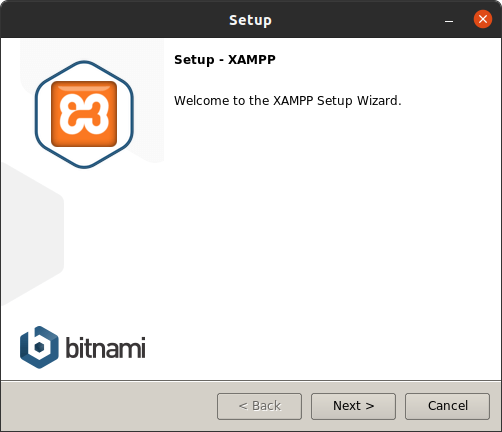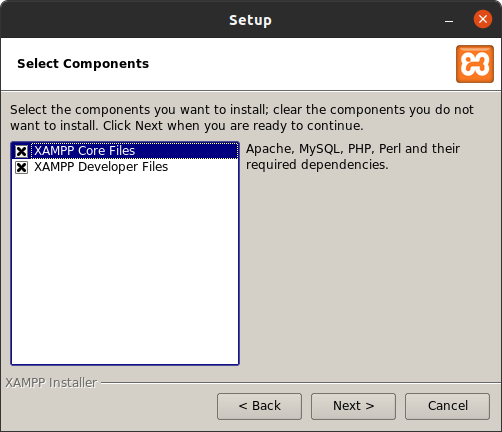

- XAMPP INSTALL COMPONENTS AFTER MAC OS
- XAMPP INSTALL COMPONENTS AFTER SOFTWARE
- XAMPP INSTALL COMPONENTS AFTER DOWNLOAD
- XAMPP INSTALL COMPONENTS AFTER FREE
Port(s): Every component is having its own unique ports. PID(s): PID represents the Process IDs for the modules.

XAMPP INSTALL COMPONENTS AFTER SOFTWARE
Module: Represents the software packages/services installed with XAMPP Server. XAMPP Control Panel has few columns as you can see for Module Service, Module, PID(s), Port(s), and Actions. The above image is the way the XAMPP Control Panel looks like.
XAMPP INSTALL COMPONENTS AFTER DOWNLOAD
As per your operating system, you can click on the download button to download the executable file. On the webpage you will find the download installers for Windows, Linux, and OS X. You can reach the download page for downloading the executable file for the XAMPP server installation. For this, we first need to visit a website and the link of the website would be.
XAMPP INSTALL COMPONENTS AFTER FREE
XAMPP is a free and open-source cross-platform web server which can be installed on your local computer.

Testing the Installation of XAMPP Server What is XAMPP Server? After reading and practicing the content of this XAMPP tutorial you will be able to answer the below queries: Below is the table of content that you should follow to have a clear understanding of the XAMPP server. We have tried to make the article as simple as possible for a better understanding of absolute beginners. In this article, we will discuss the XAMPP. Cross-Platform web servers are available for OS like Windows, MAC, and Linux, etc, hence the name cross-platform. If you are a beginner website developer then you then it is important for you to understand the importance of cross-platform web servers. Like PHP, Perl also enables users to program dynamic web applications.XAMPP Server is one of the most widely used cross-platform web servers. Perl: the scripting language Perl is used in system administration, web development, and network programming.PHP can be installed on all platforms and supports a number of diverse database systems. PHP: the server-side programming language PHPenables users to create dynamic websites or applications.Current XAMPP versions have replaced MySQL with MariaDB (a community-developed fork of the MySQL project, made by the original developers). In combination with the web server Apache and the scripting language PHP, MySQL offers data storage for web services. MySQL/MariaDB: in MySQL, XAMPP contains one of the most popular relational database management systems in the world.The server application is made available as a free software by the Apache Software Foundation. Apache: the open source web server Apache is the most widely used server worldwide for delivery of web content.
XAMPP INSTALL COMPONENTS AFTER MAC OS
The initial X stands for the operating systems that it works with: Linux, Windows, and Mac OS X. The software packet contains the web server Apache, the relational database management system MySQL (or MariaDB), and the scripting languages Perl and PHP. The name is an acronym, with each letter representing one of the five key components. XAMPP is the title used for a compilation of free software.


 0 kommentar(er)
0 kommentar(er)
